Why use cross-hatching?
March 2, 2013
A close look at cross-hatching as used by Picasso
Above: Pablo Picasso “Visage” lithograph, 1928
Today I shall share some of my favourite Picasso drawings with you. While highly realistic, notice how each of these images also hints at mystery and emotional depth. This effect is partly due to Picasso’s use of cross-hatching techniques.
How did Picasso’s use of cross-hatching differ from traditional methods, e.g. those seen in Albrecht Durer’s engravings? And is there a place for Picasso’s techniques in our own work? Let’s take a closer look.
What is cross-hatching?
Hatching and cross-hatching are ways of using lines to create dark areas of tone.
Create areas of simple hatching by drawing parallel lines like this:
 For darker areas of tone, turn this into cross-hatching. Draw another set of parallel lines to criss-cross the first, like this:
For darker areas of tone, turn this into cross-hatching. Draw another set of parallel lines to criss-cross the first, like this:
More lines can be added over the top for an even darker effect:
This basic technique can be adapted to suit your own style. Picasso varied the direction and weight of his lines as he wished, sometimes forming webs or meshes of intricate marks.
Curved cross-hatching to suggest form
A traditional variation of simple cross-hatching involves curving the lines around the form of a solid object. See how curved cross-hatching can make three-dimensional objects look totally convincing:
 Above: Albrecht Durer, detail from pen drawing of pillows, c.1493
Above: Albrecht Durer, detail from pen drawing of pillows, c.1493
In his sketchbook drawing of a mother and child, Picasso curved some lines around the surface of the figures. Here is some close-up detail of the mother’s neck to show Picasso’s use of line. See how the lines help the neck to appear more rounded:
Above: Pablo Picasso, detail from pencil drawing of a mother and child. (Scroll down for full image)
Cross-hatching to show light and shade
Build up layers of cross-hatching to suggest deep shadow. Leave sections of white paper blank to suggest highlights. Here is a page from one of Picasso’s sketchbooks. Look at the convincing effect of light and shade on the standing figure:
Above: Pablo Picasso page from a sketchbook, 1931
“Melt” the figure into its shadow
See how one edge of Picasso’s standing nude, in the picture above, seems to disappear into the darkness. I find this very intriguing.
How has Picasso achieved this effect?
Above: Picasso, detail from page of a sketchbook, 1931
On the left side of Picasso’s figure, cross-hatching lines overlap the outline of her leg, ie. hatching lines continue from the figure into the background. This creates the melting shadow effect. I’ve shown some close-up detail, above, so that you can have a better look. Click on the image to enlarge it further.
Notice also how the cross-hatching goes in many directions. Some lines curve over the surface of the figure’s form. Others form quite regular grids and meshes.
A mesh of cross-hatching suggests a flat plane
A grid-like mesh of cross-hatching can suggest a flat plane within a picture. The simple cross-hatching below could be understood as a vertically-hanging piece of cloth or as a section of vertical wall:
For example, look at the engraving, below, by Albrecht Durer. Hatching and cross-hatching on the floorboards, drapes, walls and furniture help to clarify where those surfaces are within the room. Durer has made it obvious that the figures have their feet resting on the floor, and we have a good sense of the size of the room (the far wall is adjacent to the bed).
Above: Albrecht Durer “An artist drawing a seated man”, c.1525
A veil like plane of cross-hatching
Above: I understand that the above is a Picasso drawing of Fernande Olivier. The couple had a close but tempestuous relationship with from 1904 to 1912. Please contact me by clicking here if you know more about this image as I do not have an exact date for it.
In Picasso’s drawing, above, cross-hatching has been used to suggest both form and tone.
But there are additional meshes of vertical and diagonal lines descending from the top of the page and overlapping the woman’s hair. To me, this gives the effect of “something” being there between myself (the viewer) and the sitter. I don’t see an actual veil of fabric or falling rain between myself and the sitter, but the cross-hatched meshes do give a sense of space in front of her. Could they also give a sense of emotional distance between the viewer and the sitter? What do you think? Notice how the sitter’s eyes are not obscured by the cross-hatched mesh.
Notice how, on the left side of the above portrait image, there is traditional cross-hatched shading in the background. This reaches, but does not overlap, the woman’s cheek, and gives a sense of space behind her as is often seen in traditional portraits.
 Above: Picasso pencil drawing of a standing female nude, c.1916
Above: Picasso pencil drawing of a standing female nude, c.1916
In the delicate sketchbook drawing, above and detail below, areas of hatching overlap the contour edge of the figure around the waist. Click on the images for a closer look. This is essentially a contour drawing (outline drawing). The hatching lines are used sparingly. They just hint at the figure’s form in one or two places, and suggest space in front of and around her. The image reminds me of a flickering memory, or of the idea of a ghost.
Above: Detail from Picasso pencil drawing of a standing female nude, c.1916 (scroll up for full image)
Cross-hatching for a monumental figure
Above: Pable Picasso pencil drawing of a mother and child. This is from p28 of sketchbook no. 77, c.1922, 30.5x42cm
The figure of the mother, above, could be described as a “monumental” figure drawing. She appears pleasingly heavy and rounded with her weight falling convincingly as she sits. It is as if the woman, chair and foot support were all carved from the same block of stone. There is a secure sense of solidity here.
How did Picasso use cross-hatching to achieve this “monumental figure” effect?
- Soft light is falling on these figures from above and to the left of the image. Whenever light shines on an object from one direction, areas of light and shade on the object help to explain its three-dimensional shape. Picasso has used cross-hatched pencil lines to make these light and dark tones very clear. Some parts of the paper are left white, to suggest highlights on the figures. The pencil lines are surprisingly delicate adjacent to the white areas but gradually build up to a strong dark tone in the deepest shadows. Abrupt changes of tone would make the figures appear to be angular. In this case, Picasso has graded the tone almost imperceptibly from light to dark, and this helps the figures to appear more rounded.
- Notice how many of the pencil cross-hatching lines curve around the bodies of the figures. This helps them to look more rounded and three-dimensional.
- In the mother and child drawing, Picasso has subtly melded together the mother and child. The feet are also nicely attached to their support. He partly achieved this by taking a delicate tracery of pencil cross-hatching lines across from the support into the feet, and from the mother into the child.
Above: Pablo Picasso, detail from pencil drawing of a mother and child. (Scroll up for full image)
Cross-hatching for a shimmering effect
A magical, shimmering effect can be created by varying the direction of the cross-hatching lines. Blocks of lines can overlap. Lines may vary in strength and length. A good example is the area of background around the mother’s head, as seen below:
Above: Pablo Picasso, detail from pencil drawing of a mother and child. (Scroll up for full image)
Taking these ideas further
If, like me, you have enjoyed looking at these drawings, you may like to try out Picasso’s cross-hatching methods for yourself.
I highly recommend copying sections of his drawings. Pencil is a good medium to choose if you are aiming for a delicate web of lines within your drawing. For a wonderful inky blackness, go for a pen that can produce a varied line (e.g. the Rotring Artpen) rather than a mechanical pen.
To take this a step further, use your new skills when drawing interesting objects such as statues and perhaps taxidermy specimens. Such objects are unlikely to walk off and will therefore give you time to think about what you are doing.
Once you have a feel for these techniques,you may like to adapt them to landscapes or life drawing, perhaps by drawing and cross-hatching with the tip of a charcoal stick or with a loaded paintbrush on a large scale.




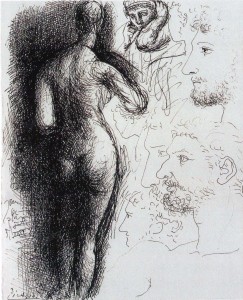
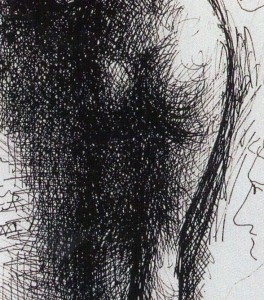
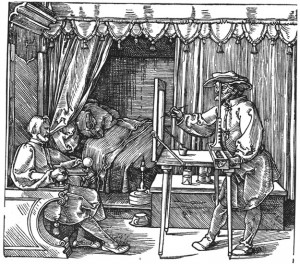

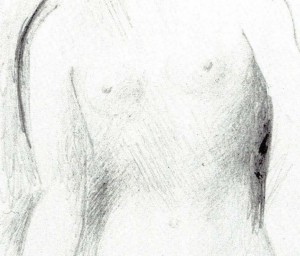
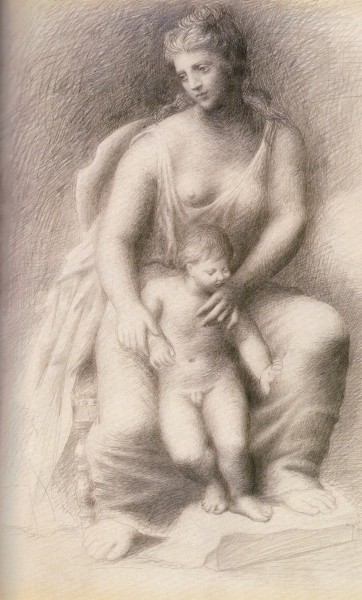

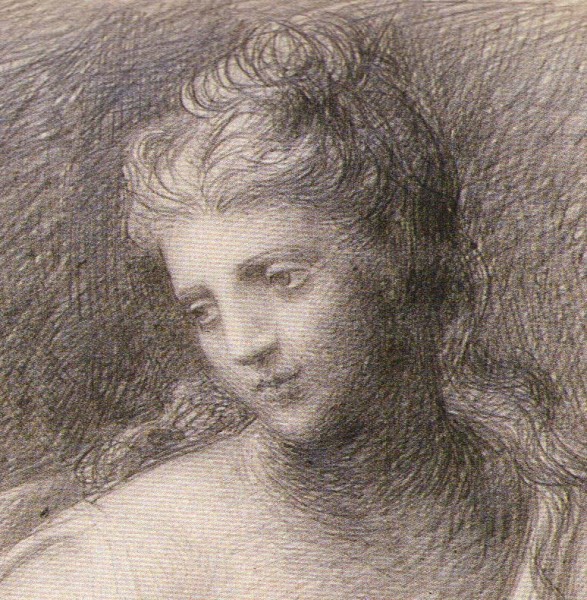
I have watched many tutorials on youtube which are very very good. What comes to my mind are Alphonso Dunn, Stan Prokopenko, and Mark Crilley but there are many others. But this…this is a real bomb. Simply great. Thanks Thanks Thanks. Half a dozen of these and I will end up with a heart attack. I needed this article like a man in the desert needs water. God bless friend.